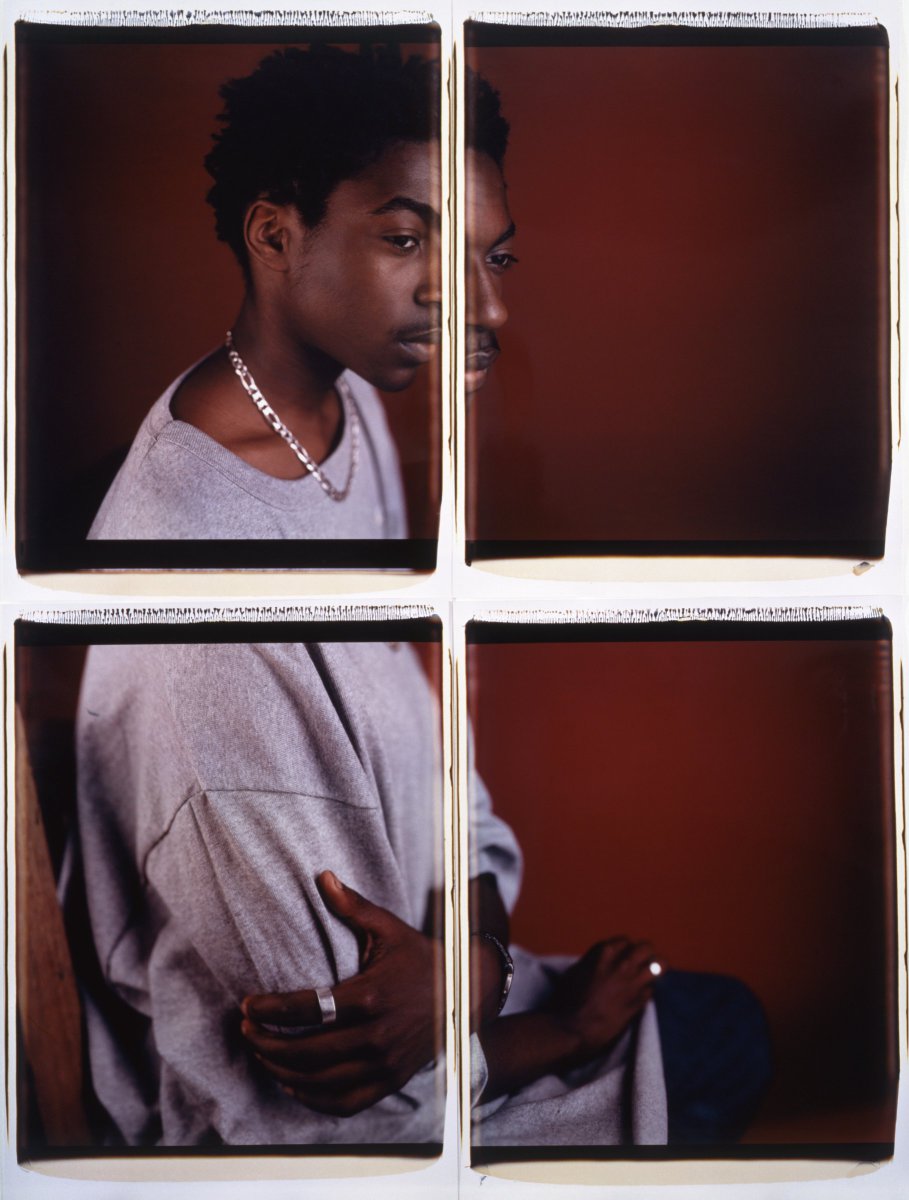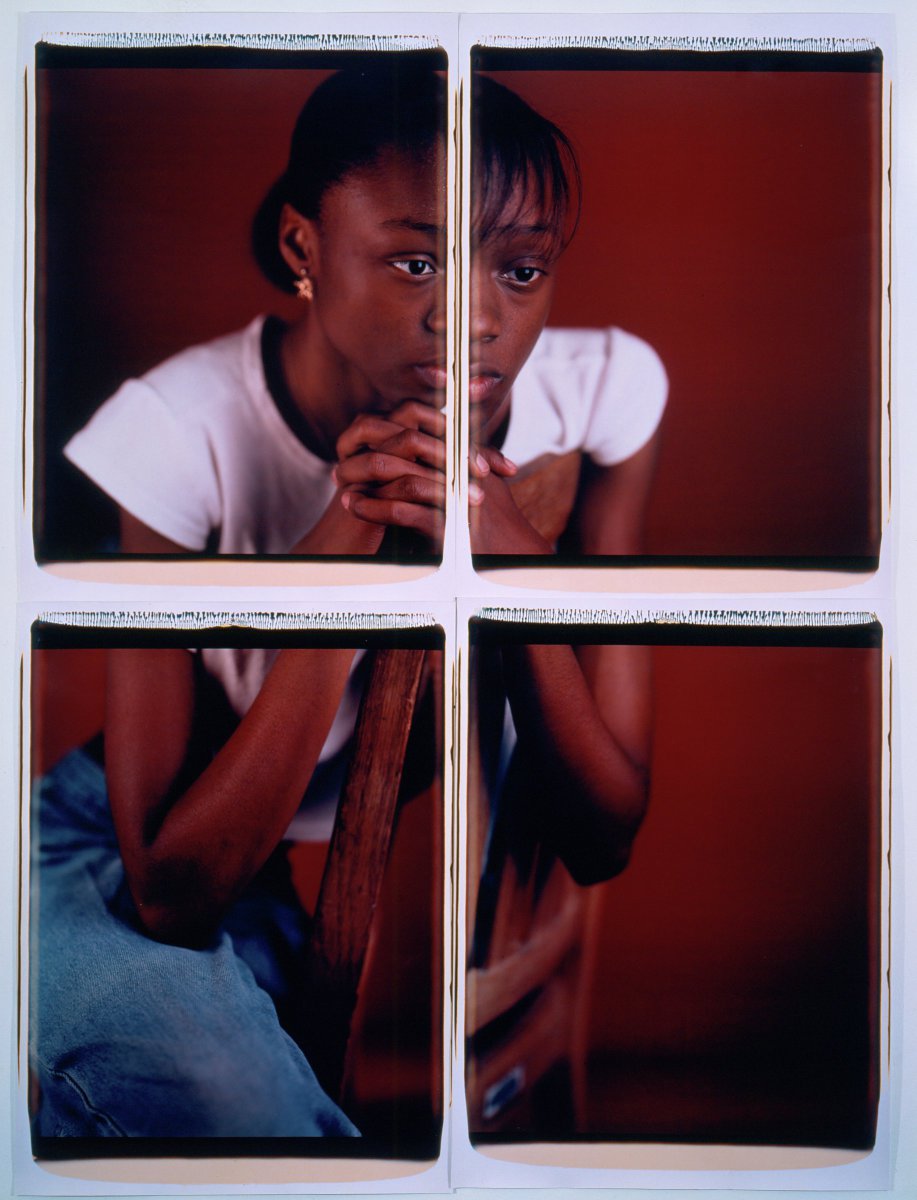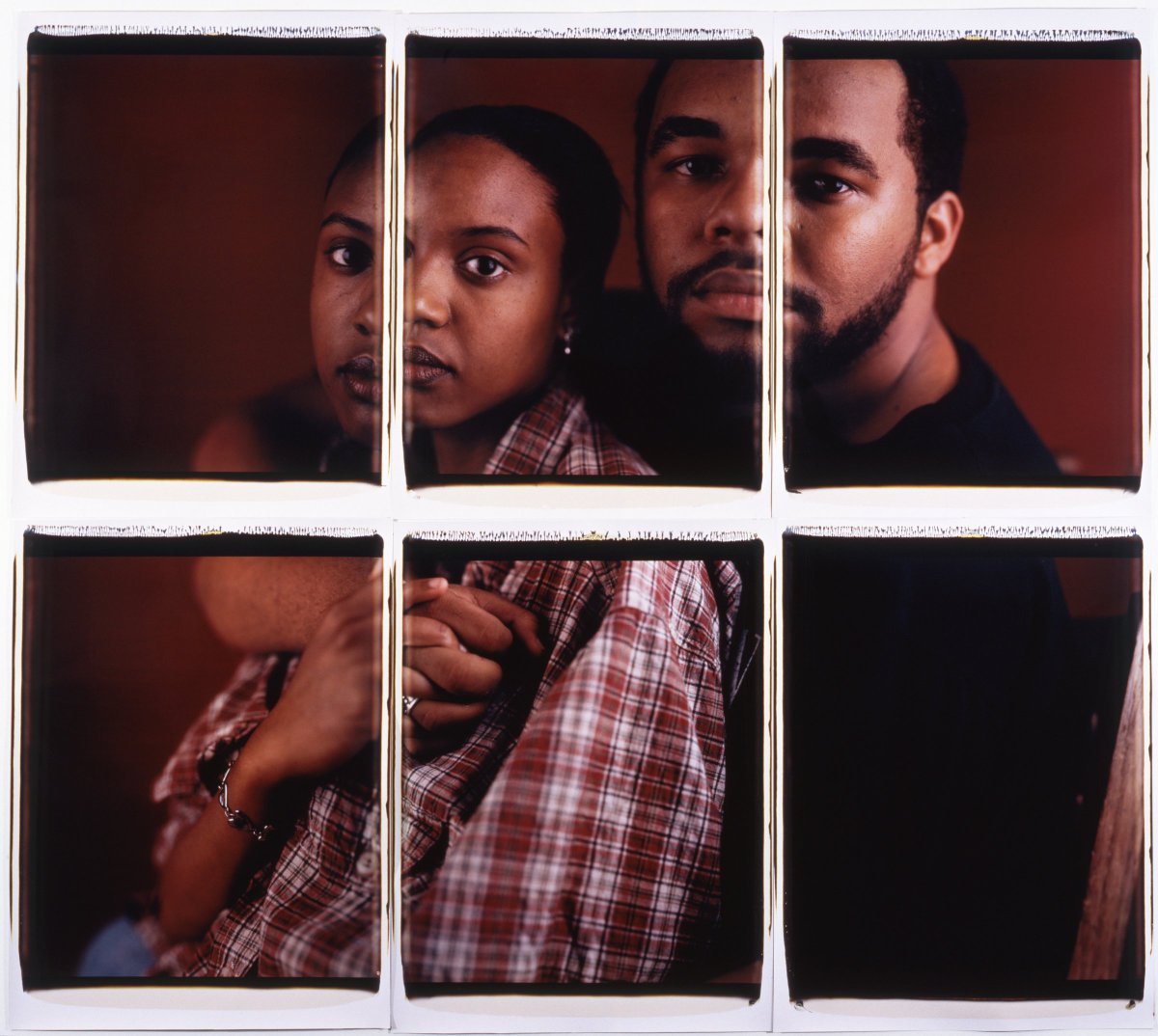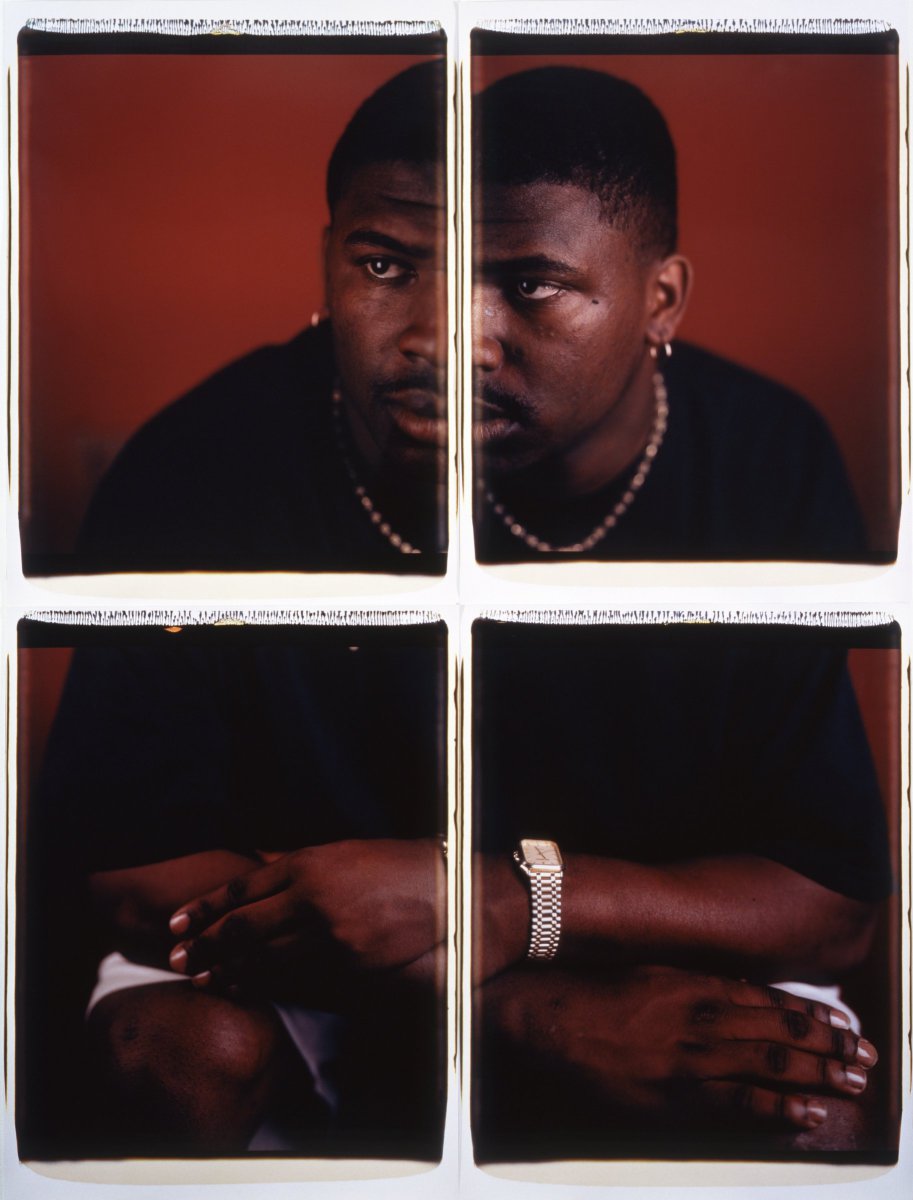Dawoud Bey
American, born 1953; lives in Chicago, Illinois

Dawoud Bey (American, born 1953), Nicole and Keith (detail), 1996, dye diffusion transfer print, 6 × 48 × 60 inches, commissioned with funds from the H. B. and Doris Massey Charitable Trust and Lucinda W. Bunnen, 1996.119 a-f. © Dawoud Bey.
By the time he received the commission from the High in 1996, Dawoud Bey had been making striking and empathic portraits of Black subjects for two decades. Across several bodies of work, his photographs, made on the streets of Harlem, Brooklyn, and his native Queens, presented his sitters as self-possessed, pointedly countering popular depictions of African Americans as lazy or ignorant. In the early 1990s, he shifted his practice from the street to the studio and began working with a massive 20-×-24-inch Polaroid camera, a cumbersome piece of equipment that yielded large, richly detailed photographs. He regularly worked with museums and schools to develop residencies that would engage young people in critical dialogues with cultural institutions around issues of representation and power.
In partnership with the High, Bey set up a studio at Tri-Cities High School in East Point, southwest of Atlanta, and over the course of a two-week residency created a series of multi-panel portraits in collaboration with the students. Using a warm color palette and contemplative poses reminiscent of the seventeenth-century Dutch master Rembrandt van Rijn, Bey set out to, as he described, “challenge prevailing notions about African-American teenagers—a group that is seen by the dominant culture as almost uniformly one-dimensional—and to create a . . . sense of heightened, commanding presence for those who have traditionally been ignored or maligned.” To emphasize this idea, he composed the final pieces so that each of the various frames is slightly out of alignment, asserting that a person’s emotional depth and psychological complexity cannot be contained within a single image.
While he had photographed young people in this manner on several prior occasions during museum residences, his residency in Atlanta was the first time he was able to set up his camera inside a school. This prolonged engagement gave these portraits a fluidity not found in previous iterations of his work and laid the foundation for his next portrait project, Class Pictures, which was shot entirely in schools.
-

Willie
Dawoud Bey, American, born 1953
1996
Dye diffusion transfer print
48 x 40 inches
Commissioned with funds from the H. B. and Doris Massey Charitable Trust and Lucinda W. Bunnen
1996.122 a-d -

Kanisha
Dawoud Bey, American, born 1953
1996
Dye diffusion transfer print
4 x 48 x 40 inches
Commissioned with funds from the H. B. and Doris Massey Charitable Trust and Lucinda W. Bunnen
1996.120 a-d -

Nicole and Keith
Dawoud Bey, American, born 1953
1996
Dye diffusion transfer print
6 x 48 x 60 inches
Commissioned with funds from the H. B. and Doris Massey Charitable Trust and Lucinda W. Bunnen
1996.119 a-f
